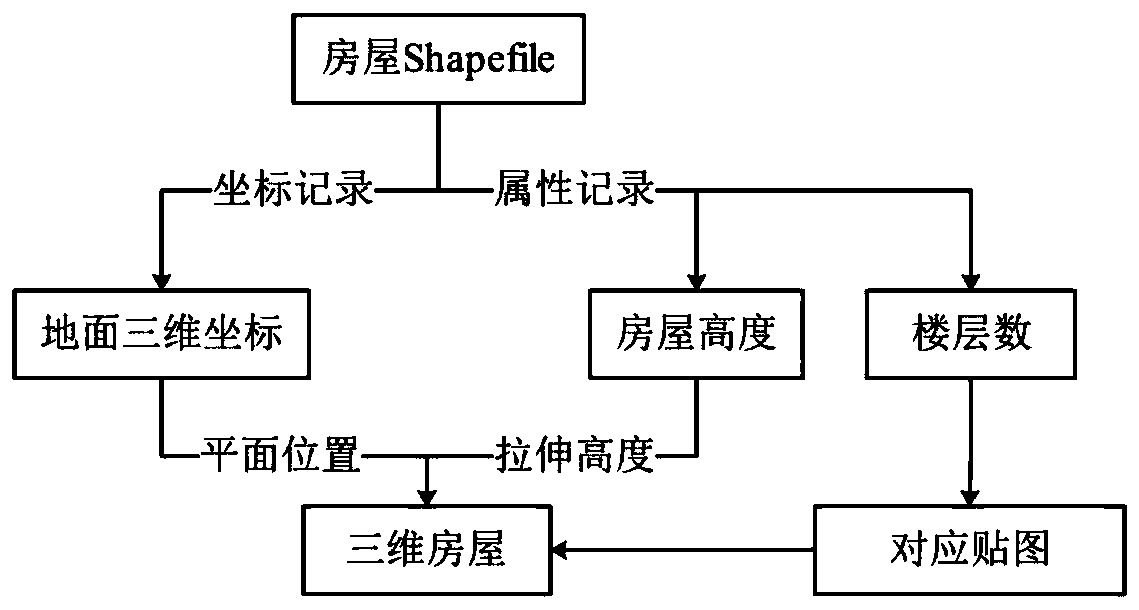Three-dimensional GIS line selection design analysis method for urban rail transit
A technology of urban rail transit and design analysis, which is applied in the field of urban rail transit 3D GIS route selection design and analysis, which can solve the problems of insufficient expression support, low design coordination efficiency, and inability to solve the problems of statistical analysis of the impact of route selection design, etc., to achieve enhanced rendering effect , ensure high efficiency and shorten the 3D modeling cycle
- Summary
- Abstract
- Description
- Claims
- Application Information
AI Technical Summary
Problems solved by technology
Method used
Image
Examples
Embodiment 1
[0048] This embodiment proposes a design and analysis method for urban rail transit three-dimensional GIS line selection, such as figure 1 shown. The urban rail transit 3D GIS route selection design analysis method of this embodiment mainly includes three parts: rapid modeling of urban virtual scene, 3D route selection interactive design and design scheme environmental impact analysis:
[0049] Step 1, rapid modeling of urban virtual scene; specifically, in this embodiment, the 3D virtual scene is developed based on the osgEarth open source tool, which is the main interactive operation object of the whole system. In order to ensure that the 3D scene can meet the interaction design requirements in the case of integrating massive information, the system adopts four technical measures:
[0050] (1) Large-scale high-precision raster data and vector data are superimposed to form a basic 3D virtual scene. Imagery and elevation raster data are tiled and loaded into the virtual scen...
Embodiment 2
[0069] The present embodiment adopts the analysis method that above-mentioned embodiment proposes to carry out concrete design, and the process is as follows:
[0070] 1. Acquisition and conversion of survey data
[0071] Large-scale urban images and elevation raster format data can be obtained through photogrammetry or remote sensing satellites. Local high-precision elevation data can be extracted from electronic topographic maps, and then converted into raster by Global Mapper. If the raster data is inconsistent with the city coordinate system, use QGIS for reprojection and correction. Use the osgearth_conv command provided by osgEarth to convert large-scale high-precision raster data into hierarchical tile data in mbtiles format. Use the QGIS tool to convert the road network, housing, line network, pipeline, pile foundation, land use planning and other data in DWG format into shapefile format files, and assign object attribute information. Such as figure 2 shown.
[00...
PUM
 Login to View More
Login to View More Abstract
Description
Claims
Application Information
 Login to View More
Login to View More - R&D
- Intellectual Property
- Life Sciences
- Materials
- Tech Scout
- Unparalleled Data Quality
- Higher Quality Content
- 60% Fewer Hallucinations
Browse by: Latest US Patents, China's latest patents, Technical Efficacy Thesaurus, Application Domain, Technology Topic, Popular Technical Reports.
© 2025 PatSnap. All rights reserved.Legal|Privacy policy|Modern Slavery Act Transparency Statement|Sitemap|About US| Contact US: help@patsnap.com



